Introduction
Introduction:
In the world of dog training, understanding the role of pack hierarchy and dominance is crucial for achieving effective results. Dogs are social animals with a strong instinct to live in packs, and acknowledging this natural behavior is key to establishing a harmonious relationship with our furry friends. By comprehending the concept of pack mentality, trainers can tap into dogs' innate social structure and use it to their advantage in training sessions.
Over time, the dominance theory has shaped our understanding of pack dynamics and how they influence dog behavior. However, it is essential to separate fact from fiction and examine scientific evidence to dispel common misconceptions surrounding pack hierarchy. Today, modern dog training approaches prioritize positive reinforcement-based methods and emphasize building a strong bond with your dog rather than relying on dominance-based techniques.
By establishing leadership through trust and respect, addressing problem behaviors, promoting socialization, and considering ethical considerations, trainers can help their dogs develop into well-behaved companions. This article will explore the evolving understanding of pack hierarchy in dog training and provide guidance on achieving balanced training approaches.
The significance of pack hierarchy and dominance in dog training
The significance of pack hierarchy and dominance in dog training lies in understanding and addressing the natural instincts and behaviors of dogs. Dogs are descendants of wolves, who live in hierarchical packs with a clear leader or alpha. By acknowledging and working with this instinctual need for structure, trainers can establish themselves as leaders in their dogs' eyes.
Dominance is another crucial aspect to consider. Dogs have a natural inclination to assert dominance, and without proper guidance, this can manifest as problem behaviors such as aggression or disobedience. Recognizing dominant behaviors and implementing corrective measures can help establish a healthier balance within the dog-human relationship.
By incorporating pack hierarchy and dominance into training methods, trainers can effectively communicate expectations to their dogs and address unwanted behaviors. This approach promotes strong foundations of trust, respect, and effective leadership, resulting in a well-behaved and balanced dog.
Understanding the concept of pack mentality

Understanding the concept of pack mentality is crucial when it comes to dog training. Dogs are social animals with a natural inclination towards forming hierarchies within their packs. In a pack, each member has a specific rank and role, and these roles are established through different behaviors and interactions.
The pack mentality in dogs involves a clear understanding of leadership, respect, and communication. Dogs instinctively look for guidance from their humans and rely on them to establish themselves as the leader of the pack. By understanding and acknowledging this natural instinct, dog owners can effectively train their dogs.
Pack mentality also emphasizes the importance of clear communication between dog and owner. Dogs rely on body language, vocal cues, and consistent signals to understand what is expected of them. Establishing proper communication channels helps in building a strong bond between the dog and their owner.
Overall, understanding pack mentality provides valuable insights into how dogs think and behave. It allows for effective training methods that foster a harmonious relationship based on trust, respect, and clear communication.
Historical Perspective

The historical perspective of pack hierarchy and dominance in dog training has its roots in the study of wolf behavior. Early theories proposed that wolves form strict linear hierarchies with an alpha wolf at the top, leading to the idea of dominant and submissive behaviors within a wolf pack. This concept was then extrapolated to dog training, assuming that dogs also operate in a similar hierarchical structure.
Notable figures like Konrad Lorenz and Rudolf Schenkel further popularized these ideas in the mid-20th century. Lorenz's work on ethology emphasized the importance of social dominance, while Schenkel's observations on wolf packs influenced our understanding of pack dynamics. Their research laid the foundation for dominance-based training methods that dominated much of early dog training practices.
However, it is important to note that these theories have come under scrutiny in recent years. New scientific studies reveal a more complex understanding of both wolf and dog behavior, challenging the traditional view of rigid dominance hierarchies. The evolving understanding suggests that dogs display more flexible social structures and cooperation rather than strict dominance.
While acknowledging the historical context and contributions made by these figures, modern dog trainers now recognize the significance of positive reinforcement-based approaches rather than relying solely on outdated concepts of dominance and hierarchy. This shift towards more humane methods has led to better outcomes in dog training and stronger relationships between humans and their canine companions.
Origin and evolution of the dominance theory
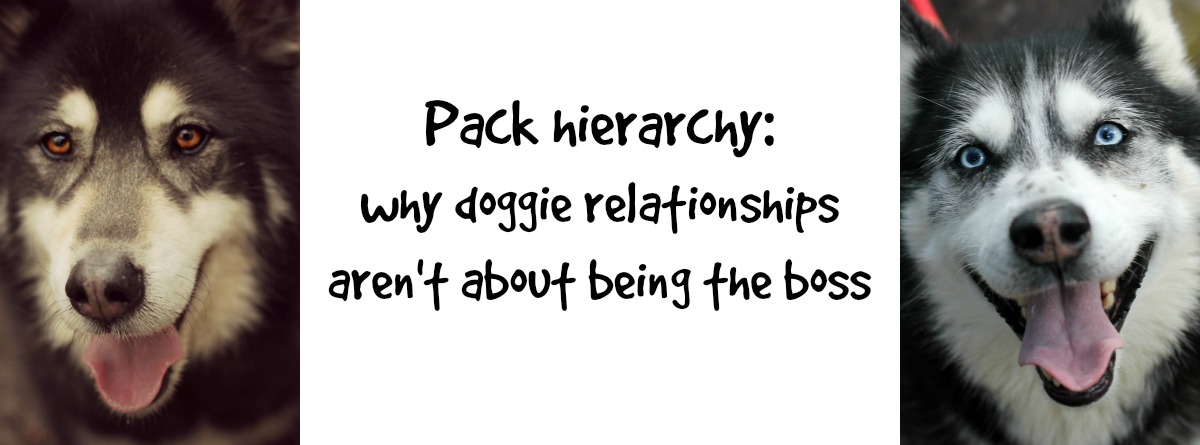
The dominance theory, which proposes that dogs and other animals operate in hierarchical systems with dominant and submissive individuals, originated from observations of wild wolf packs by Swiss animal behaviorist Rudolf Schenkel in the 1940s. Schenkel's research suggested that pack structure was based on dominance and submission, with an alpha wolf leading the group.
Over time, the dominance theory gained popularity among dog trainers and owners as a means to understand and control their pets' behavior. This approach emphasized the need for humans to assert dominance over their dogs through various training techniques.
However, as our understanding of canine behavior has evolved, so too has our perspective on pack hierarchy and dominance. Contemporary research indicates that the concept of a rigid alpha-dog hierarchy does not accurately reflect the complex social dynamics of domestic dogs or wolves in captivity.
It is important for dog trainers and owners to acknowledge these changes in our understanding of pack dynamics when developing training strategies that prioritize positive reinforcement and effective communication rather than dominance-based methods.
Key figures and their contributions

Key figures in the field of dog training and behavior have contributed significantly to our understanding of pack hierarchy and dominance. One notable figure is Konrad Lorenz, an Austrian ethologist who studied animal behavior and pioneered research on the social structure and dominance within packs. His observations of wolves in captivity helped shape the dominant theory that influenced dog training methods for many years.
Another influential figure is Ian Dunbar, a veterinarian and dog behaviorist who emphasized positive reinforcement-based training techniques. Dunbar's contributions highlighted the importance of providing rewards and incentives to encourage desired behaviors rather than relying on dominance-based approaches.
Cesar Millan, popularly known as "The Dog Whisperer," has also made an impact with his focus on effective leadership techniques. Although controversial, Millan's methods emphasize understanding how dogs perceive pack dynamics to establish a balanced relationship between humans and their canine companions.
These key figures have played pivotal roles in shaping the ongoing discussions surrounding pack hierarchy and dominance in dog training, pushing for more humane and scientifically supported approaches to create better bonds with our furry friends.
Misconceptions and Debunking Myths
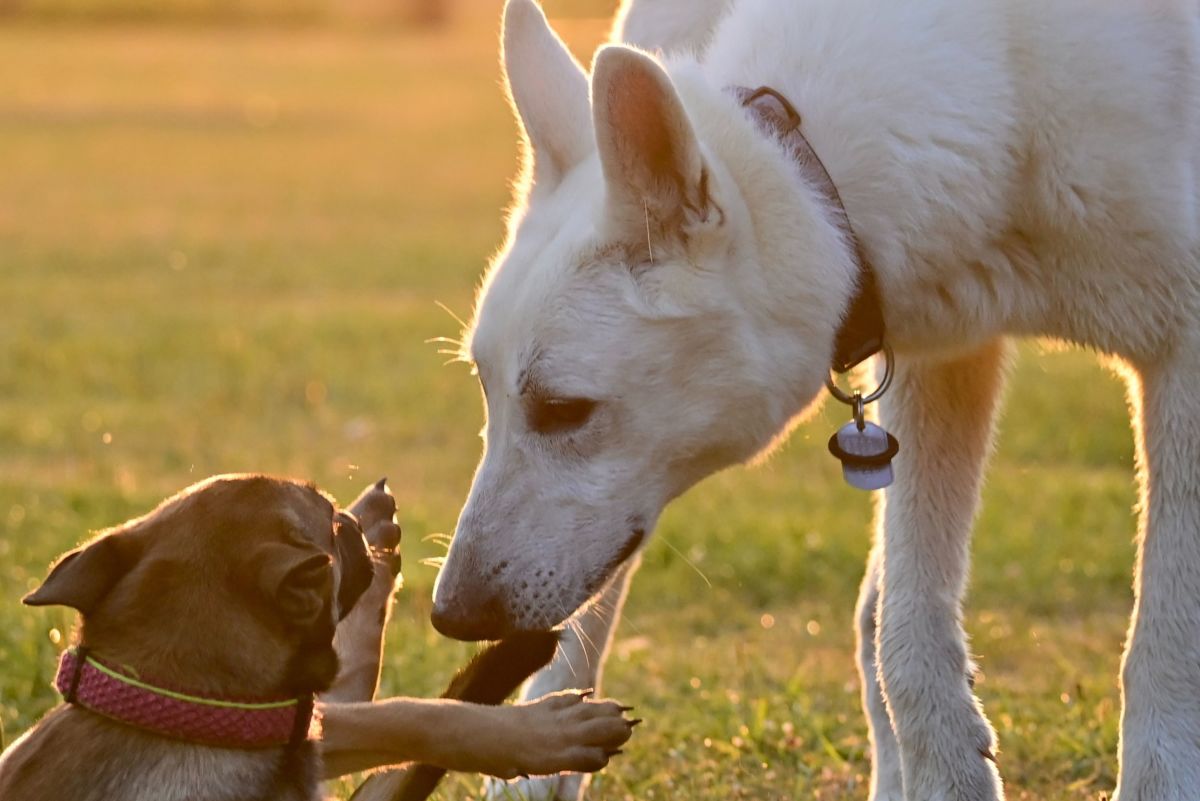
One common misconception surrounding pack hierarchy and dominance in dog training is the belief that all dogs naturally strive to be the "alpha" or dominant member of the pack. This idea suggests that owners must constantly assert their dominance over their dogs in order to maintain control. However, scientific evidence has debunked this myth.
Research has shown that dogs do not operate in a strict hierarchical structure like wolf packs, and dominance-based training methods can actually lead to negative outcomes such as fear, anxiety, and aggression in dogs.
It is important to understand that dogs are social animals that thrive on positive reinforcement and cooperation. Instead of focusing on dominance, modern dog training approaches emphasize creating a strong bond with your dog based on trust and mutual respect.
By using positive reinforcement-based techniques and establishing effective leadership through consistent training, owners can address problem behaviors and promote positive interactions with their dogs. It is essential to balance dominance-based techniques with humane training methods that prioritize the well-being and individuality of our canine companions.
Common misconceptions surrounding pack hierarchy and dominance
One common misconception surrounding pack hierarchy and dominance in dog training is the belief that dogs are constantly vying for dominance over their human owners. This misconception often leads to the use of force-based training methods in an attempt to assert dominance over the dog.
Another misconception is that establishing dominance requires the use of aggressive or alpha behaviors towards the dog. This belief can lead to harmful and abusive training techniques, which can have negative effects on the dog's well-being.
Additionally, some people believe that a dominant dog is a dangerous or aggressive dog. However, dominance does not necessarily equate to aggression, and it is important to understand that problem behaviors stem from various factors, such as fear, anxiety, or lack of proper training and socialization.
It is crucial to debunk these misconceptions and emphasize the importance of positive reinforcement-based approaches in order to promote effective and humane dog training methods.
Examining the scientific evidence and debunking myths
Examining the scientific evidence and debunking myths:
When it comes to the role of pack hierarchy and dominance in dog training, it is crucial to rely on scientific evidence rather than relying on myths and misconceptions. Over the years, numerous studies have challenged traditional beliefs about dominance in dogs.
Recent research has indicated that the concept of pack hierarchy, as it is commonly understood, may not accurately depict dog behavior. While wolves were initially studied to understand dog behavior due to their genetic similarities, further observation has shown that dogs have unique characteristics and social dynamics. Dogs are not striving to be dominant or establish a rigid hierarchy within their human households.
Furthermore, the notion that dominant behaviors must be forcefully confronted or suppressed has also been called into question. Modern dog training approaches emphasize positive reinforcement and reward-based techniques, which have been proven to be more effective in shaping desirable behaviors.
Instead of focusing on dominance, trainers now prioritize building a strong bond with their dogs based on trust, respect, and clear communication. This approach encourages a mutually beneficial relationship where both the dog and owner can thrive.
In conclusion, the evolving understanding of pack hierarchy and dominance in dog training indicates that traditional beliefs may not accurately reflect canines' behavior. By relying on scientific evidence and employing positive reinforcement techniques, trainers can cultivate a harmonious partnership with their canine companions while debunking outdated myths about dominance.
Modern Dog Training Approaches
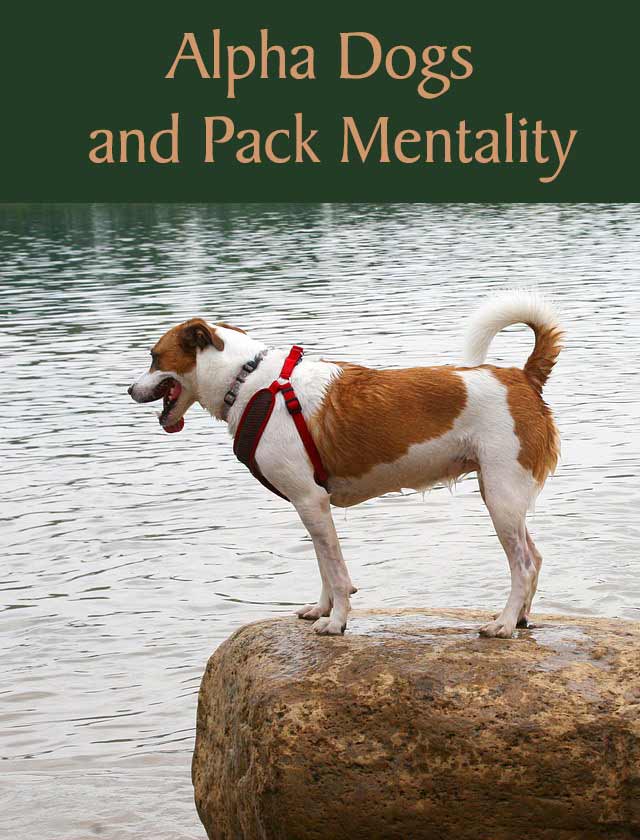
Modern dog training approaches have evolved significantly in recent years, placing a strong emphasis on positive reinforcement-based methods. These techniques focus on rewarding desired behaviors rather than punishing unwanted ones. By using treats, praise, and play as rewards, trainers can effectively reinforce behaviors that they want to encourage.
In addition to positive reinforcement, modern training approaches also prioritize building a strong bond between the dog and owner. This involves spending quality time together, engaging in interactive activities and games, and providing plenty of mental stimulation.
Furthermore, establishing effective leadership is another crucial aspect of modern training. This does not involve dominance or asserting physical control over the dog but rather building a foundation of trust and respect through clear communication and consistent guidance.
Encompassing these approaches allows for a more humane and effective way of training dogs while promoting their well-being and enhancing their overall behavior.
Positive reinforcement-based training methods
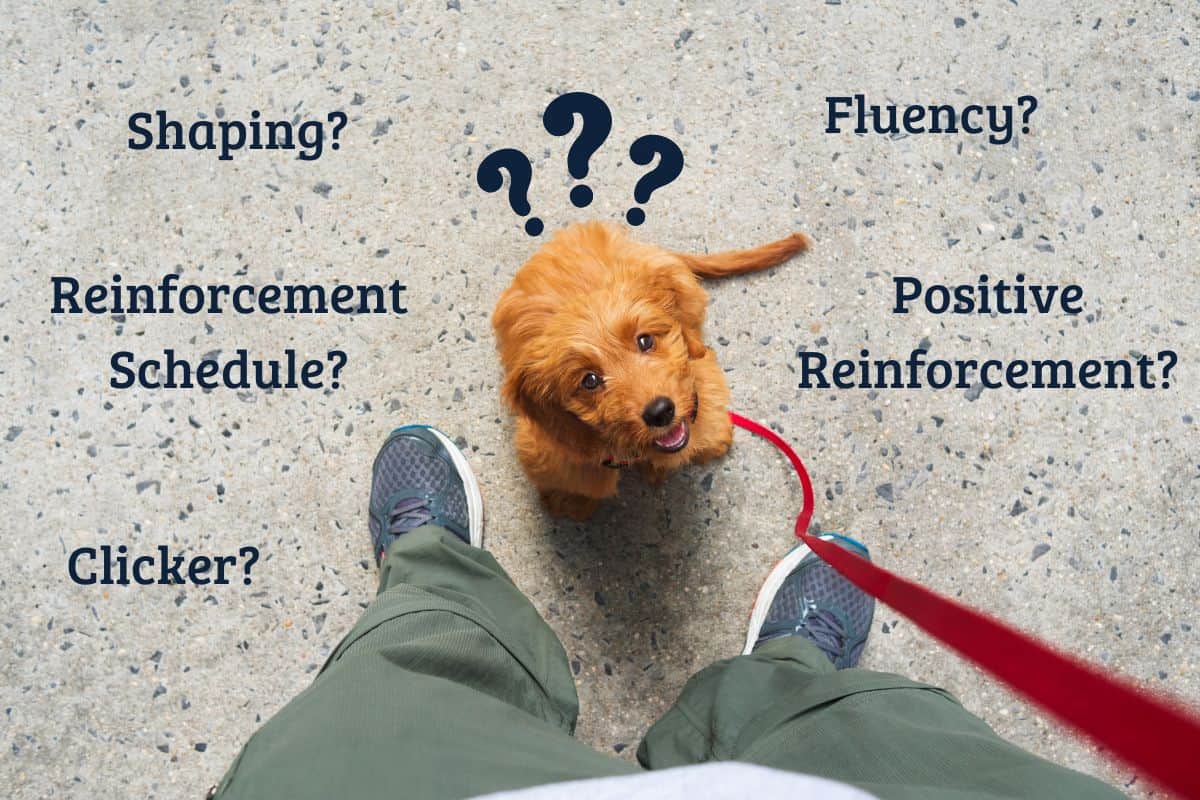
Positive reinforcement-based training methods are a highly effective and humane approach to dog training. These methods focus on rewarding desired behaviors rather than punishing unwanted ones. The premise is simple - when a dog displays a behavior that we want to encourage, such as sitting or coming when called, we provide positive reinforcement in the form of treats, praise, or play. This helps to reinforce the idea that good behavior leads to pleasant outcomes.
By using positive reinforcement, dogs learn to associate their actions with rewards and are motivated to repeat them. This approach strengthens the bond between the dog and the trainer, creating a positive and trusting relationship. It also encourages dogs to think and problem-solve, as they are actively participating in the learning process.
Positive reinforcement-based training methods have been proven to be more effective and have longer-lasting effects compared to dominance-based techniques. They provide a more respectful and compassionate way of teaching dogs, promoting their well-being while achieving desired results.
Creating a strong bond with your dog
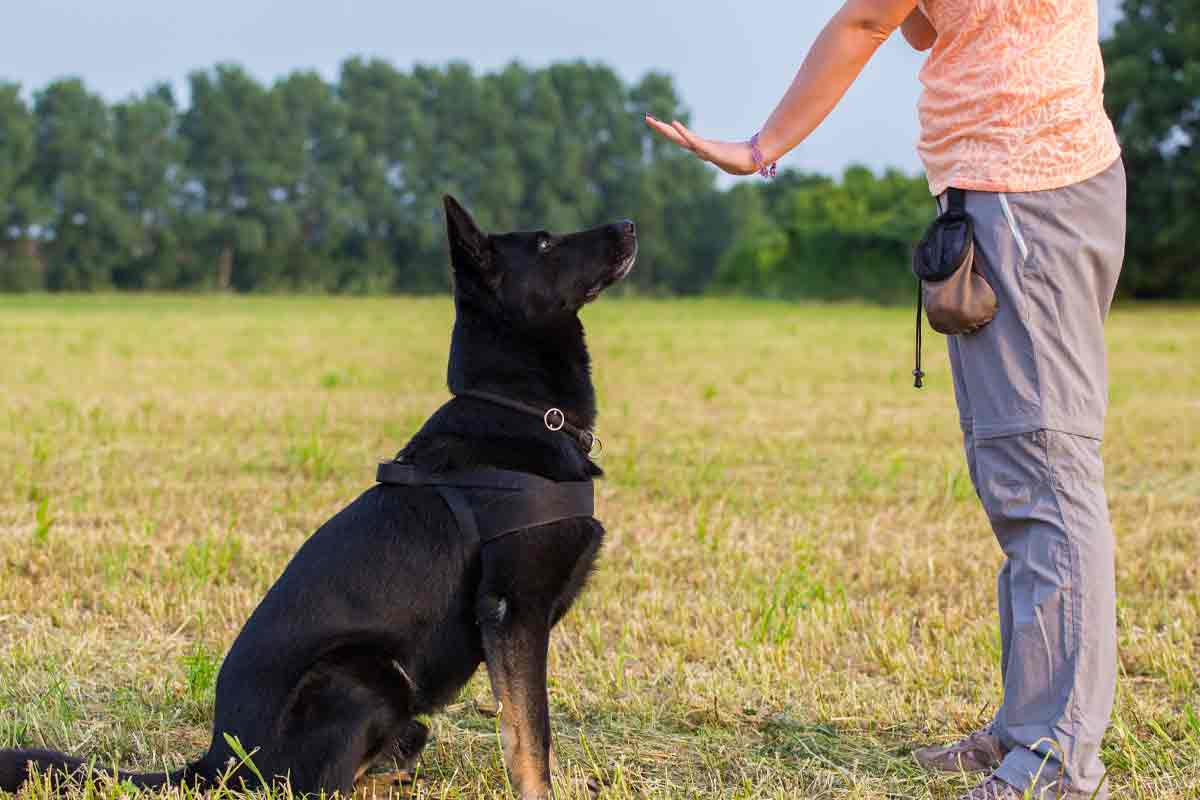
To create a strong bond with your dog, it is important to prioritize positive interactions and quality time together. Spend time engaging in activities that both you and your dog enjoy, such as daily walks, play sessions, or training exercises. Consistency is key in strengthening the bond, so establish a routine that includes regular feeding times, exercise, and training sessions.
Show affection towards your dog by providing praise, petting, and treats for good behavior. Non-verbal cues like gentle touches and soothing tones can further reinforce your connection. Taking the time to understand your dog's needs and preferences will help foster trust and mutual understanding.
Lastly, always maintain a calm and assertive demeanor as dogs respond well to confident leadership. A strong bond with your dog will not only enhance training but also create a loving and harmonious relationship.
Establishing Leadership
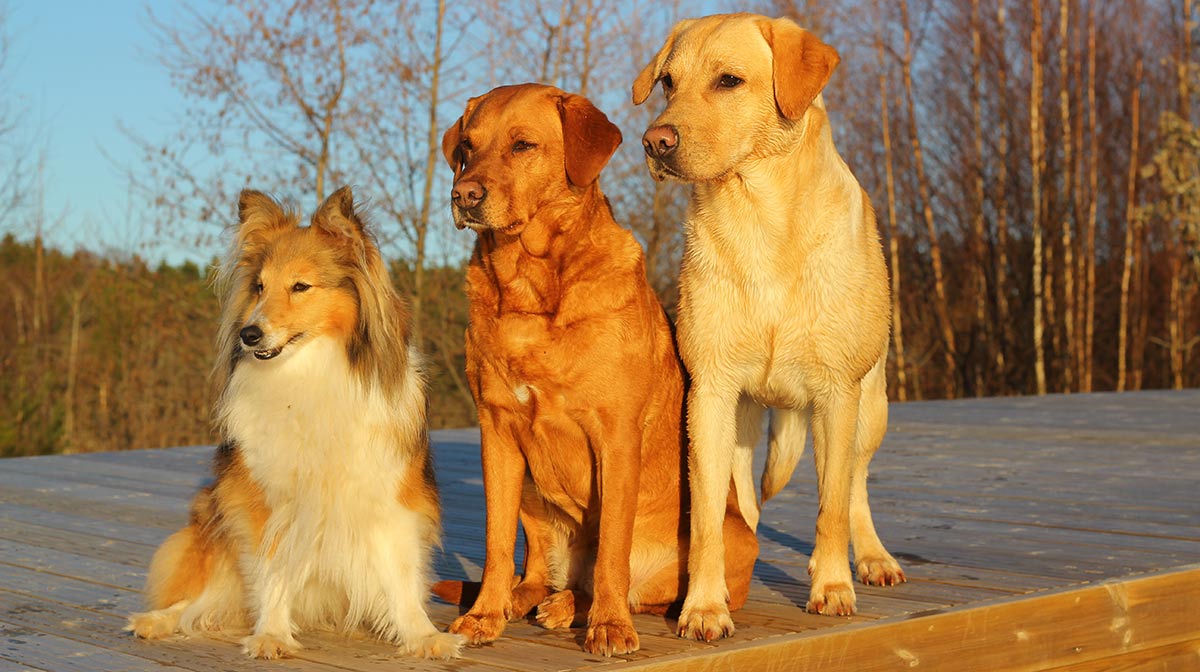
Building a foundation of trust and respect is crucial when it comes to establishing leadership with your dog. It is important to remember that leadership does not involve dominance or aggression, but rather a calm and assertive approach.
To establish yourself as the leader, consistency is key. Set clear rules and boundaries for your dog and consistently enforce them. This means being consistent in your commands, expectations, and rewards.
Effective leadership techniques include providing positive reinforcement when your dog follows commands or displays desired behaviors. This can be done through treats, praise, or playtime. On the other hand, it is important to avoid harsh punishments or yelling, as this can create fear and confusion in your dog.
By being a strong yet compassionate leader, you can build a strong bond with your dog based on trust and mutual respect. This will ultimately lead to better obedience and a well-behaved dog.
Building a foundation of trust and respect

Building a solid foundation of trust and respect is essential in dog training. Dogs are sensitive creatures and establishing a bond built on trust ensures effective communication and cooperation. To cultivate trust, it is crucial to provide a safe and nurturing environment for your dog. Consistency in your actions and training methods, as well as clear and concise commands, will help gain their trust.
Respect is equally important in building a strong relationship with your dog. Treat your dog with kindness and fairness, avoiding punitive or harsh training methods. Understanding their needs and preferences will promote mutual respect.
Establishing a foundation of trust and respect sets the stage for successful training sessions, creating a harmonious partnership between you and your dog. With a solid groundwork based on trust and respect, you can achieve better results in addressing behavioral challenges and creating a well-behaved companion.
Effective leadership techniques

Effective leadership techniques are crucial in dog training for establishing a strong bond and creating a sense of order within the pack. One important technique is consistent and clear communication. Dogs thrive on consistency, so it is essential to set clear rules and boundaries and consistently enforce them. In addition, positive reinforcement is a powerful tool in shaping desired behaviors. Rewarding your dog for good behavior helps reinforce their understanding of what is expected of them.
Another effective technique is practicing patience and calmness. Dogs can sense their owners' energy, so maintaining a calm demeanor during training sessions will help create a relaxed environment conducive to learning. Additionally, providing regular exercise and mental stimulation helps keep a dog's energy levels in balance, reducing the likelihood of unwanted behaviors arising from frustration or boredom.
Lastly, being a fair and compassionate leader is essential. Using forceful or aggressive approaches can create fear and undermine the trust between you and your dog. Instead, focus on building trust through positive interactions, rewards, and affection.
By implementing these effective leadership techniques, you can establish yourself as a reliable leader in your dog's eyes while nurturing a harmonious relationship based on trust and respect.
Addressing Problem Behaviors
Recognizing and addressing problem behaviors is an important aspect of dog training. Dominant behaviors such as aggression, resource guarding, and disobedience can disrupt the harmonious relationship between a dog and their owner. When it comes to addressing these behaviors, it is crucial to approach them with a combination of patience and firmness.
The first step in addressing problem behaviors is to accurately identify and understand the underlying causes. This may involve consulting with a professional dog trainer or behaviorist who can provide guidance based on their expertise. Once the root cause is determined, corrective measures can be implemented.
Implementing corrective measures involves consistent reinforcement of desirable behaviors and redirecting or discouraging unwanted behaviors. Positive reinforcement techniques such as reward-based training can help to encourage good behavior while discouraging dominant or aggressive actions.
It is important to note that addressing problem behaviors should always be done in a humane manner. Punitive or harsh methods can be distressing for dogs and may lead to unintended consequences such as fear or anxiety. The goal should always be to guide the dog towards more appropriate behavior using methods that are positive, effective, and respectful.
By addressing problem behaviors appropriately, dogs can learn alternative ways of interacting and responding in various situations. This not only ensures a safer environment for everyone involved but also strengthens the bond between the owner and their furry companion. With consistency, patience, and an understanding of their needs, problem behaviors can be successfully managed and transformed into positive ones.
Recognizing and addressing dominant behaviors

Recognizing and addressing dominant behaviors is crucial for effective dog training. It is important to understand the signs that indicate dominant behavior in order to address them appropriately. Some common signs of dominance in dogs include guarding resources, aggressive displays, and refusing to follow commands.
When you observe these behaviors, it is essential to assert your leadership and establish yourself as the pack leader. Start by setting clear rules and boundaries for your dog to follow. Consistency is key when addressing dominant behaviors – be firm but fair in your approach.
Implementing positive reinforcement-based training methods can also help redirect your dog's behavior towards more desirable actions. Encourage good behavior through rewards, treats, and praise.
Remember, it is essential to address dominant behaviors with patience and consistency to create a balanced and well-behaved dog.
Implementing corrective measures

Implementing corrective measures in dog training is an essential aspect of addressing problem behaviors and promoting a harmonious relationship with your canine companion. When dealing with dominant behaviors, it is important to understand that punishment or forceful methods can often worsen the situation and damage the bond between you and your dog. Instead, it is more effective to focus on redirecting unwanted behavior through positive reinforcement and rewards.
One approach is to use positive interrupters, which involve redirecting your dog's attention away from a problem behavior by offering an alternative behavior that is rewarded. For example, if your dog starts engaging in a dominant behavior such as jumping on visitors, you can interrupt them by redirecting their attention to sitting and rewarding them for complying.
Additionally, consistency and clear communication are crucial when implementing corrective measures. It is important to set clear boundaries and consistently reinforce desired behaviors while discouraging unwanted ones without resorting to punishment or aggression.
By using these corrective measures, you can effectively address problem behaviors while maintaining a positive and respectful relationship with your dog.
The Role of Socialization
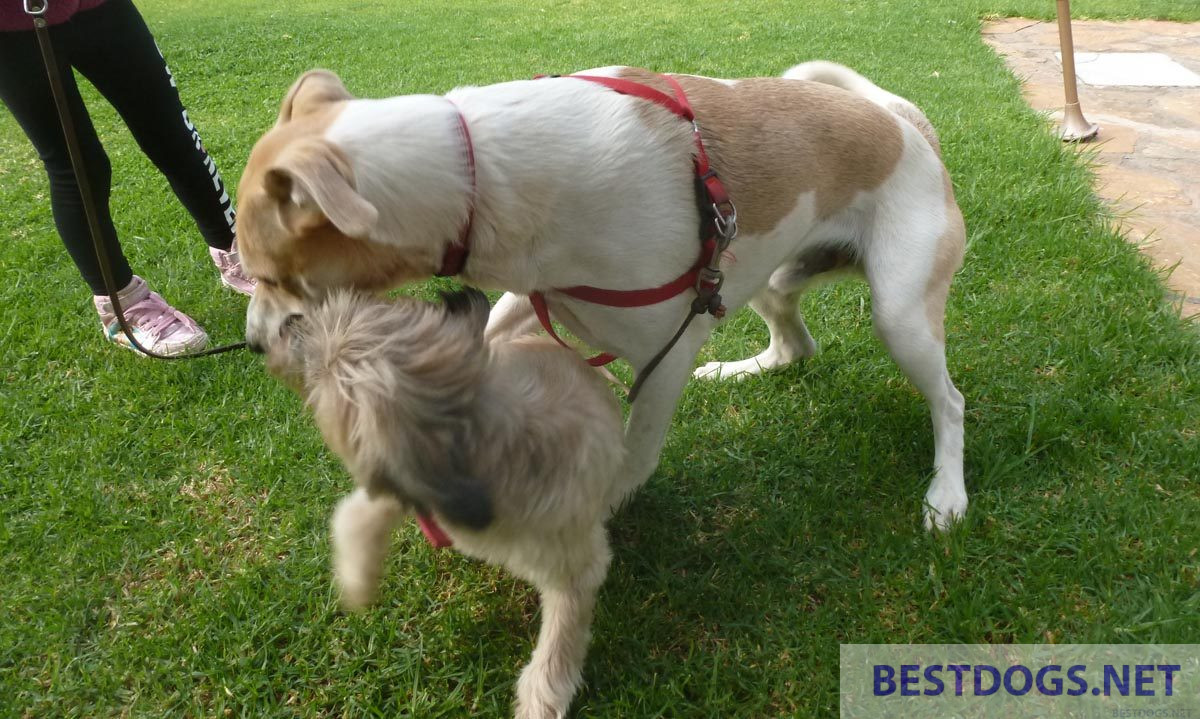
Importance of early socialization in preventing aggression: Early socialization plays a crucial role in shaping a dog's behavior and minimizing the development of aggression. By exposing puppies to various people, animals, and environments during their critical socialization period (typically between 3-14 weeks of age), they learn to adapt and feel comfortable in different situations. This exposure helps them develop positive associations with new experiences, reducing the likelihood of fear-based aggression later in life. Socialization also teaches dogs appropriate ways to interact with others, promoting healthy communication and preventing aggressive behavior stemming from fear or lack of understanding.
Promoting positive interactions: Socialization provides opportunities for dogs to interact with other dogs, people, and different environments in a controlled and positive manner. These positive interactions help dogs develop appropriate social skills and build confidence. When dogs are well-socialized, they are more likely to exhibit friendly and non-threatening behaviors when encountering unfamiliar beings or situations.
By allowing puppies and young dogs to explore new environments, meet different individuals, and experience varied stimuli in a safe way, responsible dog owners can help them become well-rounded adults who are less likely to exhibit aggressive behavior.
Importance of early socialization in preventing aggression

Early socialization plays a crucial role in preventing aggression in dogs. By exposing puppies to a variety of experiences, people, and other animals during their critical developmental period, they learn appropriate behavior and become well-adjusted adults.
During this sensitive stage, puppies must be introduced to various environmental stimuli such as different sounds, textures, and situations. Properly socialized dogs are less likely to develop fear or aggressive responses towards unfamiliar people or animals later in life.
Early socialization also helps dogs become more adaptable and better able to handle new situations, reducing stress and anxiety. It promotes positive interactions with others, enhancing their ability to communicate effectively without resorting to aggression.
Therefore, it is essential for dog owners to prioritize early socialization as an integral part of their training regimen to ensure a well-rounded and non-aggressive canine companion.
Promoting positive interactions

Promoting positive interactions is crucial in dog training to foster a healthy and well-adjusted canine companion. By encouraging positive interactions, dog owners can enhance their dog's social skills and reduce the likelihood of aggressive or fearful behavior.
One effective way to promote positive interactions is through controlled and supervised outings to socialize with other dogs and people. These outings allow dogs to learn appropriate behaviors in a variety of situations. Positive reinforcement techniques such as praise, treats, and play can also be used to reward desired behaviors during these interactions.
In addition, providing opportunities for regular playtime with both humans and other dogs can further foster positive interactions. Engaging in interactive games, such as fetch or hide-and-seek, not only provides mental and physical stimulation but also strengthens the bond between the owner and their dog.
By encouraging positive interactions through socialization activities and using rewards to reinforce desired behavior, dog owners can create a confident, well-socialized canine companion that is more likely to interact positively with others in various situations.
Ethical Considerations

Balancing dominance-based techniques with humane training methods is crucial when considering the ethical implications of pack hierarchy and dominance in dog training. While understanding and establishing leadership is important, it is equally important to prioritize the well-being and individuality of our furry companions.
Respecting your dog's emotional and physical needs should always be a top priority. This means using training methods that are based on positive reinforcement rather than punishment or intimidation. Rewarding desired behaviors promotes trust and builds a strong bond between you and your dog.
Furthermore, it is essential to remember that each dog is unique and may respond differently to various training techniques. Being patient, flexible, and adaptable in your approach can help ensure that you're meeting your dog's specific needs.
By finding a balance between dominance-based techniques and humane training methods, you can create a safe and respectful environment for your dog while still maintaining effective leadership. Ultimately, this approach leads to a well-behaved and happy canine companion.
Balancing dominance-based techniques with humane training method
Balancing dominance-based techniques with humane training methods requires a thoughtful and ethical approach. While dominance theory was popularized in the past, the understanding of dog behavior has evolved significantly. It is now recognized that relying solely on dominance-based techniques can be detrimental to a dog's well-being and may lead to fear and aggression.
Humane training methods, on the other hand, prioritize positive reinforcement and building a strong bond based on trust and mutual respect. These methods rely on rewards such as treats, praise, and play to reinforce desired behaviors. They promote a positive learning experience for dogs while enhancing their emotional well-being.
When training a dog, it is important to strike a balance between setting boundaries and establishing leadership without resorting to force or intimidation. Training should focus on clear communication, teaching desired behaviors through positive reinforcement, and redirecting unwanted behaviors effectively.
By combining humane training methods with an understanding of pack hierarchy and dominance within a modern context, we can create a harmonious relationship with our dogs that promotes their overall happiness and balanced behavior.
Respecting your dog's well-being and individuality

Respecting your dog's well-being and individuality is a crucial aspect of effective dog training. It is essential to recognize that each dog has unique needs, preferences, and personalities. By acknowledging and respecting their individuality, you can create a positive and enriching training experience for them.
This involves considering their physical and emotional well-being throughout the training process. It means ensuring they have a safe and comfortable environment, providing them with appropriate exercise and mental stimulation, and addressing any health concerns promptly.
Furthermore, respecting your dog's individuality entails understanding their limitations and strengths. Not every dog will excel at the same tasks or respond to training methods in the same way. Tailoring your approach to accommodate their specific needs can foster a stronger bond between you and your furry companion.
By practicing empathy, compassion, and patience towards your dog, you can create a training environment that prioritizes their well-being while also achieving desired behavioral outcomes. Ultimately, this approach promotes a harmonious relationship built on trust and understanding.
Conclusion

The evolving understanding of pack hierarchy and dominance in dog training has led to a shift in training approaches. While the dominance theory was once prominent, it has been debunked and replaced with more effective and humane methods. Modern dog training emphasizes positive reinforcement, building a strong bond, and establishing leadership through trust and respect.
Addressing problem behaviors involves recognizing and correcting dominant behaviors in a firm yet gentle manner. Early socialization plays a crucial role in preventing aggression, and promoting positive interactions helps dogs develop appropriate social skills. It is important to balance dominance-based techniques with humane training methods, always prioritizing the well-being and individuality of our furry companions.
By adopting these balanced approaches, we can ensure our dogs become well-behaved members of our families while strengthening the bond between us.
The evolving understanding of pack hierarchy in dog training

As our understanding of dog behavior and training techniques has evolved, so has our understanding of pack hierarchy and dominance in dog training. In the past, pack hierarchy was often seen as a rigid structure where dominance was established through force and aggression. However, modern approaches focus on building trust, respect, and cooperation with our canine companions.
We now know that dogs have complex social structures that are not solely based on dominance. Instead of enforcing dominance over our dogs, positive reinforcement-based training methods are now widely accepted as effective ways to train them. These methods involve rewarding desired behaviors and ignoring or redirecting unwanted behaviors.
Today, trainers emphasize the importance of creating a strong bond with your dog through consistent training, clear communication, and positive interactions. By establishing ourselves as leaders through trust and respect, we can effectively address problem behaviors and promote a harmonious relationship.
In conclusion, the evolving understanding of pack hierarchy in dog training has shifted towards positive reinforcement-based methods that prioritize trust, respect, and cooperation. By embracing these modern techniques, we can nurture well-behaved dogs who thrive within their human families.
Achieving balanced training approaches for a well-behaved dog
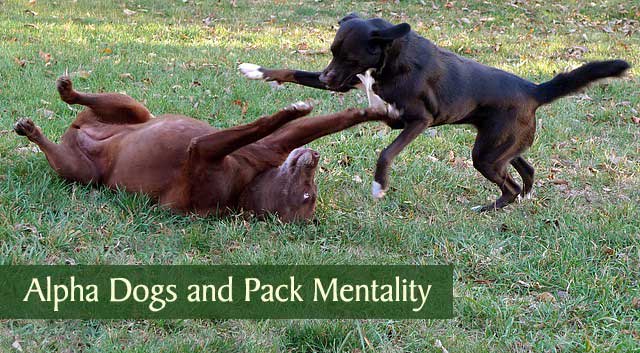
To achieve a balanced training approach for a well-behaved dog, it is important to combine the understanding of pack hierarchy and dominance with modern dog training techniques. By incorporating positive reinforcement-based methods, such as rewards and treats, you can encourage desired behaviors and create a positive association for your canine companion.
Additionally, building a strong bond with your dog is crucial. Spending quality time together, engaging in play, and providing mental stimulation through interactive toys can help establish trust and enhance the relationship between you and your furry friend.
Establishing effective leadership through consistent rules and boundaries is another key aspect. This involves setting clear expectations, using firm but fair techniques, and reinforcing desirable behaviors while addressing dominant tendencies in a calm and assertive manner.
It is essential to address any problem behaviors promptly. Recognizing dominant behaviors and implementing corrective measures can prevent the escalation of unwanted actions. However, it is important to remember to use humane techniques that prioritize your dog's well-being above all else.
Socialization plays a vital role in preventing aggression. Introducing your dog to various environments, people, and other animals at an early age helps them develop appropriate social skills and reduces the likelihood of fearful or aggressive reactions.
When incorporating dominance-based techniques into training, it is necessary to balance this approach with humane considerations and respect for your dog's individuality. Remember that each dog is unique and may respond differently to various training methods.
In conclusion, achieving balanced training approaches requires understanding pack hierarchy while integrating positive reinforcement techniques, building a strong bond based on trust and mutual respect, addressing problem behaviors promptly but humanely, promoting socialization for proper behavior development, and always considering your dog's well-being throughout the training process. With these methods in place, you can guide your furry companion towards becoming a well-behaved member of society.




0 Comments